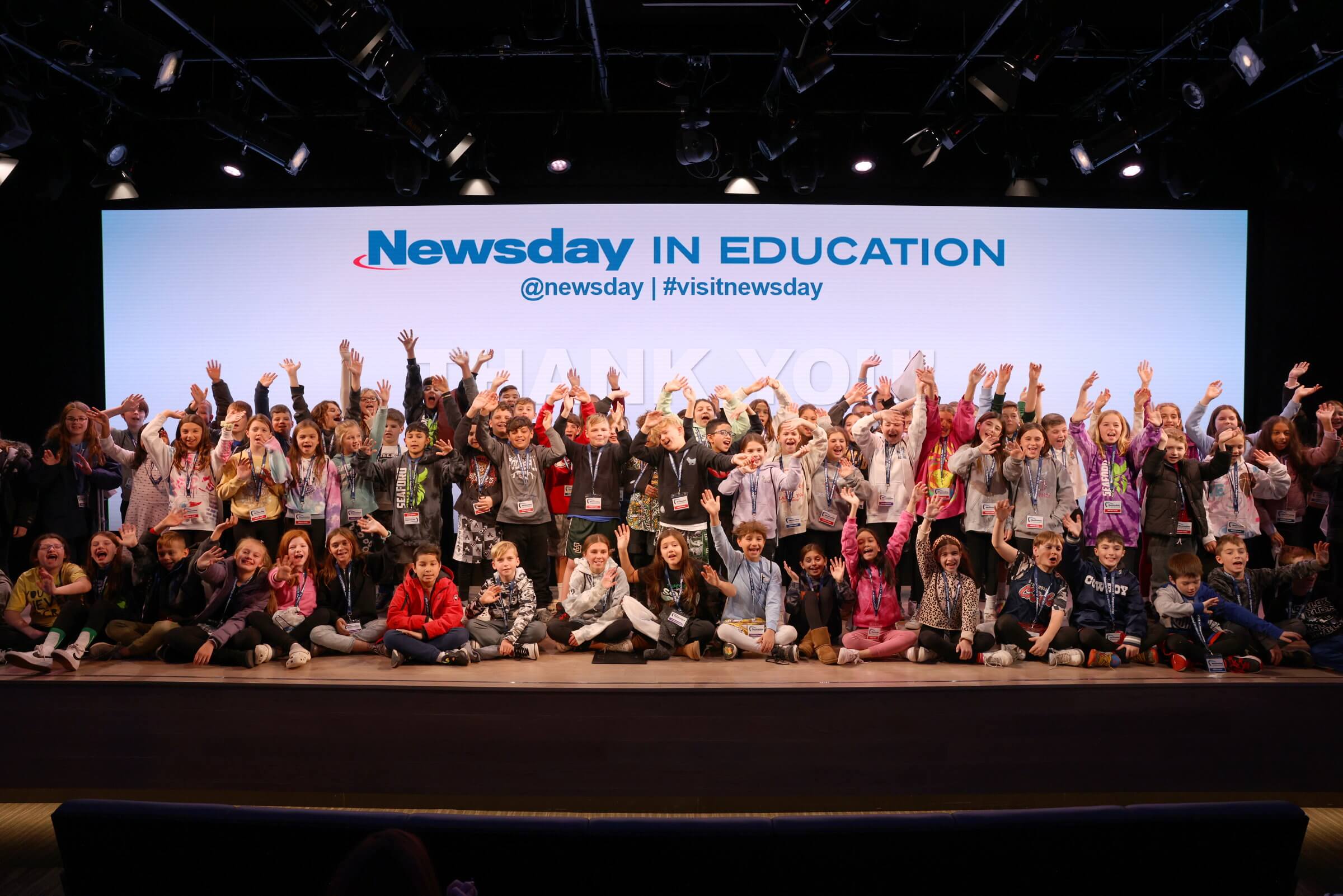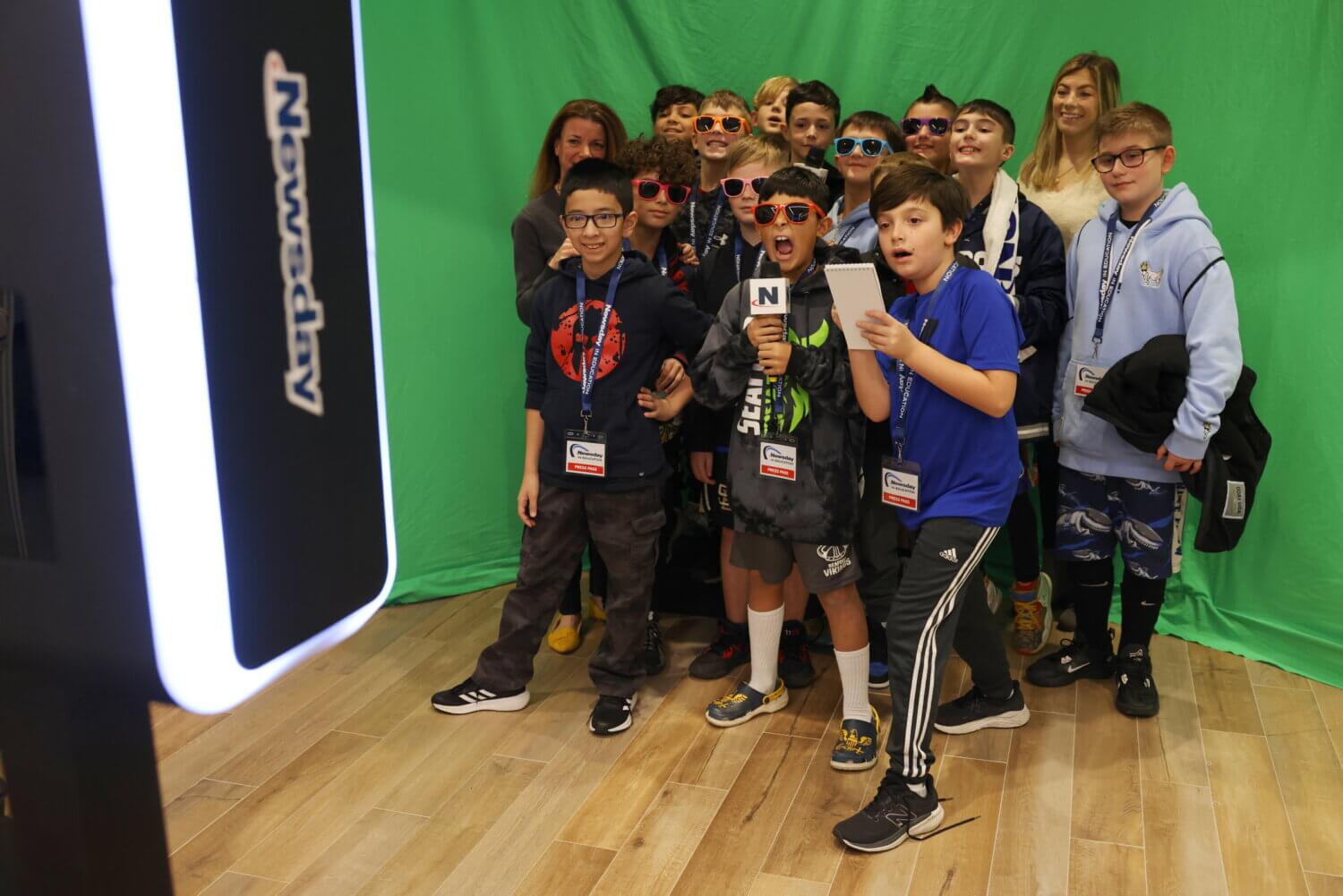This school year, Newsday started to focus on an important group of future news consumers — fifth graders. It launched Newsday in Education, a program that combines field trips with free digital access to all school districts on Long Island.
The reason — make Newsday cool again.
“Our initial reason for launching Newsday in Education was for it to be among our branding activations aimed at helping to change the perception of Newsday from a dated product brand to a highly relevant contemporary brand embedded in the culture of Long Island,” said Patrick Tornabene, Newsday’s chief consumer officer. “Not only it is highly successful at achieving that goal, but it’s also fulfilling a sense of our duty to educate students on journalism, and it’s heartwarming for staff across Newsday.”
The news has been part of the American classroom for generations, according to the Education Resources Information Center from the U.S. Department of Education.
Today, many communities still work with Newspapers in Education for resources and curriculum. But in Long Island, New York, the program at Newsday withered over time thanks to several factors, including shifting media habits and the economy. After 9/11, tours ended due to security concerns.
In 2021, publisher Debby Krenek decided to bring the kids back in some new ways with a program of Newsday’s very own.
“This is a big initiative for Newsday,” she said. “Educating our students is so important for Long Island’s future and Newsday is proud to be able to provide this program for our amazing schools and educators across Long Island.”
Via email, I spoke with the team at Newsday about what they built and how other newsrooms can do it. Our conversation has been edited for style and brevity.
Kristen Hare: How did this start?
Amanda Fiscina-Wells, editor/project manager: Newsday has a history of connecting with suburban Long Island students. During building tours decades ago at our former facility, students left with newspaper ink-stained hands from making newsprint hats and ringing ears from the loud printing presses, while stacks of newspapers were dropped off at Long Island’s 120-plus school districts daily.
While the Newsday building was closed during the pandemic, we began to build relationships with school districts by setting up complimentary access on school grounds and meeting with teachers/administrators to find out where journalism falls in the curriculum and field trip logistics. Once our building reopened, work started on creating the tour program based on this groundwork.
The program has two components: field trips to Newsday’s Long Island, New York, headquarters and complimentary digital access to all Long Island districts on school grounds.
The events team designed field trips for fifth graders to align with the introduction to journalism in their school curriculum. The program’s goal is to offer students a behind-the-scenes, first-hand look at how professional journalism is carried out through interactive experiences to keep the students engaged.
Melissa Carfero, head of events: We of course hoped the tours would be well received, but we never imagined the feedback and impact would be as positive as it has been. The best part of the tours is truly the students. They are all excited to be here and very engaged during the visit. It’s extremely rewarding to see the fruits of your labor have such a positive impact. We often receive feedback from the teachers and chaperones after their visits that the students are still talking about the field trip and many want to be reporters now.
Fiscina-Wells: Teachers on these tours today tell us they remember this from their childhoods and love seeing how we reimagined the experience for this era. It shows Newsday’s commitment to the region we cover and how Newsday has evolved into the multimedia organization it is today.
Hare: Tell us about the field trips. What do the kids do and see?
Carfero: As soon as students arrive, they’re handed a press pass and become a cub reporter for the day. They also receive a backpack with their very own reporter’s notebook and pen to cover a breaking news assignment created just for them. The cub reporters participate in a mock press conference and work alongside an experienced Newsday reporter to gather the most important information on their breaking news assignment — the Who, What, When, Where and Why.
They also collaborate with their classmates to anchor a Mad Libs news report for social media and enjoy taking photos at our green screen photo booth, complete with props and images related to the news story they cover. Students then tour the newsroom, where they meet Newsday editors and reporters and visit the NewsdayTV Studios broadcast control room for a behind-the-scenes look at how Newsday’s newscast is produced.
Back in the classroom, students receive unlimited access to Newsday.com and Newsday’s electronic edition and use what they learned during their trip to write articles on the news event they covered here.
Hare: What are you measuring that shows you this is successful
Carfero:
-
Positive NPS (Net Promoter Score): This is measured through a survey given to teachers and administrators following each tour. Our NPS score is currently 100, the highest possible.
-
Fully booked schedule: All available dates were booked immediately resulting in more than 1,700 students touring this school year. Next year we will move to a lottery system to accommodate all the interest.
-
Complimentary access configured for all Long Island school districts: 90% of all districts are set up, 112/125 school districts.
-
Positive testimonials/feedback
Hare: How could other newsrooms do this, regardless of resources?
Fiscina-Wells: From the start, our directive was always to create a dynamic program that highlighted Newsday’s journalism without interfering with that work. Most planning for this is at the front end, so once the program was developed, it became routine, and many were willing to support the program across departments. Our events team did an incredible job creating a unique, immersive experience for the students, and it has been great for morale seeing elementary students in the newsroom weekly.
Carfero: My advice for others looking to create tours is to first focus on building a rapport with as many districts in your market as possible. Our team opened this door by bringing journalists into the classrooms. The relationships we built with administrators and teachers across Long Island were instrumental in developing the programming for our field trips. Managing the visits is straightforward once they’re up and running. The challenge here was creating programming that aligned with the fifth grade curriculum and was inclusive of all learning levels, but also kept students engaged throughout their visit.
Hare: Can you share a playbook about how you put this together?
Fiscina-Wells:
-
Compiled a database of all school districts on Long Island with contact information and went district by district to enable complimentary access through IP address whitelisting. (Our market has 120-plus individual districts but in other areas with county districts this would be simpler.)
-
Consulted with teachers and administrators to learn when journalism is introduced in curriculum and field trip logistics.
-
Met with newsroom editors, studio staff, facilities department, security and others to collaborate and develop plans.
-
Used the learnings to create tour programming, scripts, video elements and other assets aligned with our facility resources to ensure a turnkey project.
-
Identified one school district to pilot the program and followed up with educators and administrators after for feedback.
-
Sent newsletter out to districts opening tours for booking.
This is a general overview, we are happy to elaborate if needed and welcome inquiries from other publishers.

Fifth graders participate in the Newsday In Education visit on Nov. 29, 2023 at the Newsday headquarters in Melville, NY. (Courtesy Newsday)







